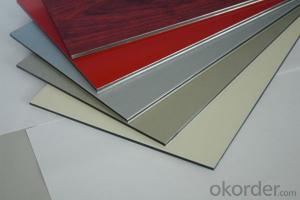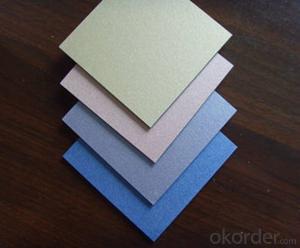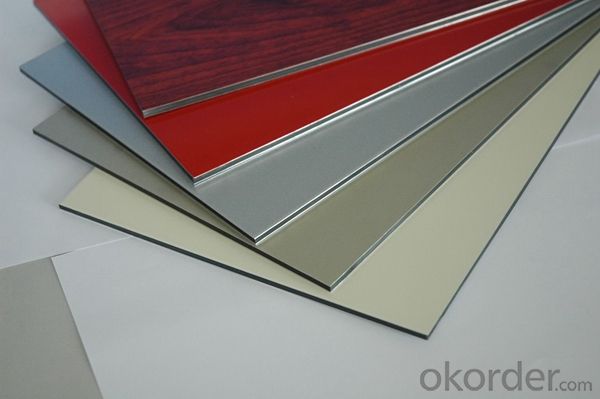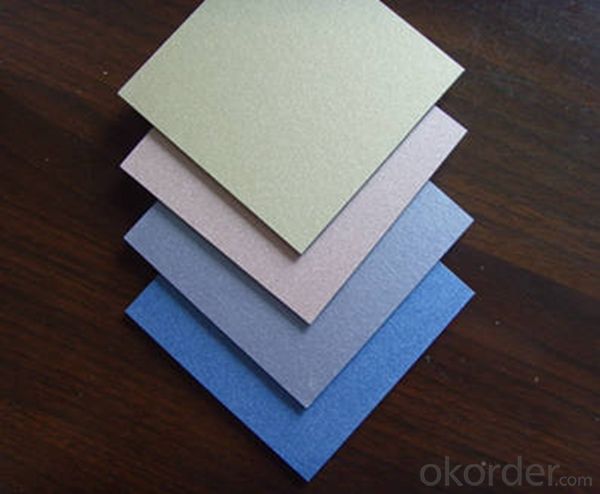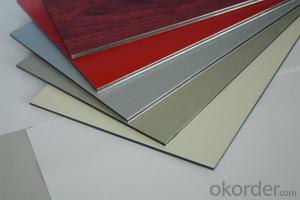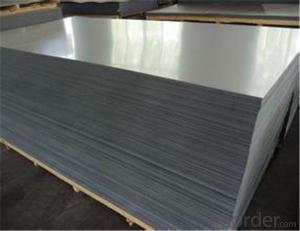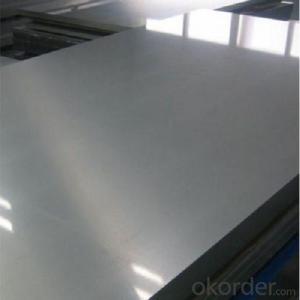4x8 Sheets of Aluminum 090 Thick for Building Curtain Walls - Color Coating Aluminum Sheet
- Loading Port:
- Shanghai
- Payment Terms:
- TT OR LC
- Min Order Qty:
- 5 m.t.
- Supply Capability:
- 10000 m.t./month
OKorder Service Pledge
OKorder Financial Service
You Might Also Like
Specification
1. Specification of Color Coating Aluminium Sheet for Building Curtain Walls
ALLOY | AA1050 AA1060 AA1070 AA1100 ETC AA3003 AA3004 AA3005 AA3104 AA3105 ETC AA5005 AA5052 AA5083 AA5754 ETC AA8011 AA8006 AA8079 ETC |
TEMPER | H14,H16,H18,H22,H24,H26,H32,O/F |
THICKNESS | 0.03MM-3.0MM |
WIDTH | 30mm-1700mm |
COIL WGT | 2Mt - 3Mt |
COIL ID | φ508mm,φ610mm |
SURFACE | PE ,PVDF , EPOXY,16-25MICRON PAINTING THICK, MAX 40MICRONS |
STANDARD | GB/T 17748-1999 |
2. Application of Color Coating Aluminium Sheet for Building Curtain Walls
(1).Interior: wall cladding, ceilings, bathrooms, kitchens and balconies, shutters, doors...
(2).Exterior: wall cladding, facades, roofing, canopies, tunnels,column covers , renovations...
(3).Advertisement: display platforms, signboards, fascia, shop fronts...
3. Feature of Color Coating Aluminium Sheet for Building Curtain Walls
Surfact Quality :
Be free from Oil Stain, Dent, Inclusion, Scratches, Stain, Oxide Dicoloration, Breaks, Corrosion, Roll Marks, Dirt Streaks and other defect which will interfere with use,
Mechenical Property:
Chemical Composite and Mechanical Property
4. Certificate:
SGS and ROHS(if client request, paid by client), MTC(plant provided), Certificate of Origin(FORM A, FORM E, CO), Bureau Veritas and SGS (if client request, paid by client), CIQS certificate
5. Image of Color Coating Aluminium Sheet for Building Curtain Walls
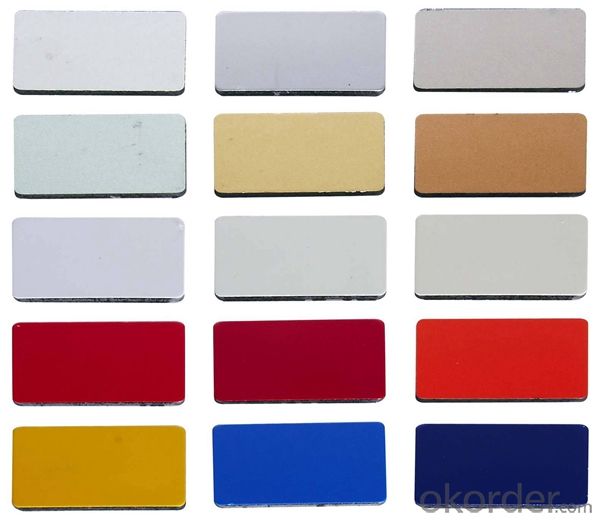
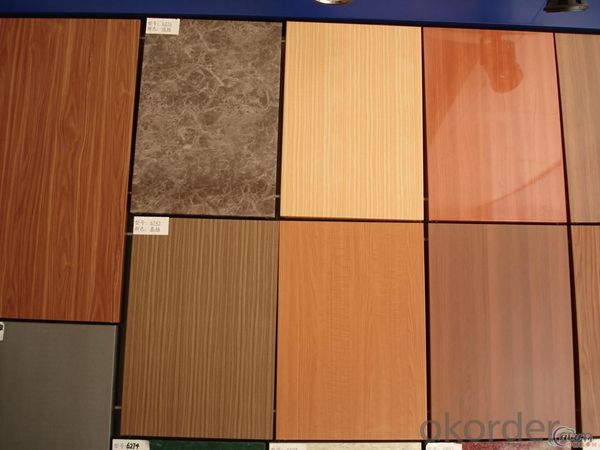
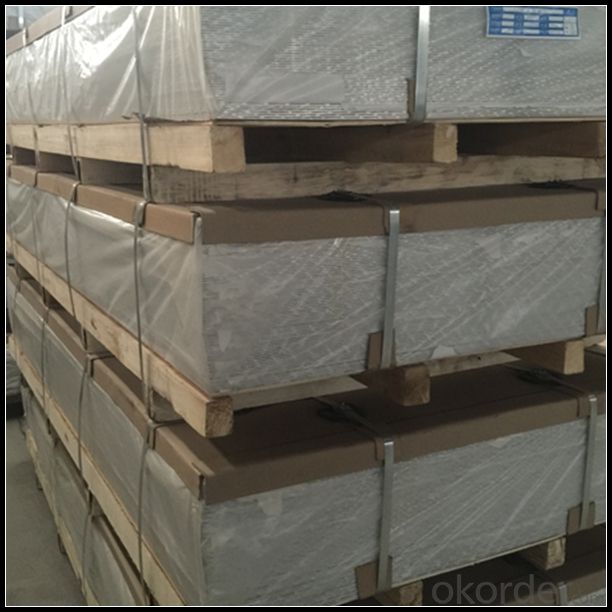
6. Package and shipping of Color Coating Aluminium Sheet for Building Curtain Walls
First, plastic cloth with drying agent inside; Second, Pearl Wool ; Third, wooden cases with dry agent , fumigation wooden pallets, aluminum surface could cover blue PVC film
7. FAQ
1) What is the delivery time?
Dpends on actual order, around 20 to 35 days
2)What is the QC system:
We have QC staff of 20 persons and advanced equipment, each production is with MTC traced from Aluminum ingot lot.
3) What market do you mainly sell to?
Australia, America, Asia, Middle East, Western Europe, Africa etc
- Q: I was hoping someone could explain aluminum corrosion with degreasers and cleaning formulas for automotive cleaning. This starts with, where is this aluminum (wheels)?, what types of cleaners?, do cleaners cause corrosion? Any insights would be appreciated.
- stick with an automotive brand cleaner most wheels are clearcoated to prtect the finish. I use 50/50 water and simple green to clean wheels and ive been detailing 20+ years
- Q: How do aluminum sheets perform in extreme temperatures?
- Known for their excellent performance in extreme temperatures, aluminum sheets possess a high melting point of around 660 degrees Celsius, enabling them to endure high temperatures without deforming or melting. In situations of intense heat, aluminum sheets exhibit a low thermal expansion rate, ensuring minimal expansion or contraction, thus guaranteeing dimensional stability. Consequently, they prove to be highly suitable for utilization in industries such as aerospace, automotive, and construction, where extreme temperatures commonly prevail. Similarly, even in severely cold temperatures, aluminum sheets maintain their strength and durability, unlike certain other metals that become brittle and susceptible to cracking. Additionally, aluminum boasts exceptional thermal conductivity, facilitating the even distribution of heat, which proves advantageous in applications where efficient heat dissipation is of paramount importance. All in all, aluminum sheets demonstrate exceptional performance in extreme temperatures, establishing themselves as a dependable choice for a variety of industries.
- Q: Can aluminum sheets be used for decorative panels?
- Yes, aluminum sheets can be used for decorative panels. Aluminum is a versatile and lightweight material that can be easily shaped, cut, and formed into various designs and patterns. It offers a sleek and modern appearance, making it a popular choice for decorative applications in both residential and commercial settings. Aluminum panels can be used for a wide range of purposes, including wall cladding, ceiling panels, room dividers, signage, and more. Additionally, aluminum is resistant to corrosion and weathering, making it suitable for both indoor and outdoor use. Furthermore, aluminum panels can be customized with different finishes, such as powder coating or anodizing, to enhance their visual appeal. Overall, aluminum sheets are an excellent choice for creating decorative panels due to their aesthetic appeal, durability, and versatility.
- Q: Remember the notorious Chevy Vega of the 1970's? As I recall,one the big problems with that car was that it was equipped with an aluminum block engine. The new Ford Mustangs arealso equipped with aluminum engines to reduce curb weightand improve fuel efficiency. Will they be prone to the sameproblems that the Vega had down the road? Are there othermanufacturers that have used aluminum engines with successrecently?
- Aluminum is the most easily repaired material used in engines and can be readily welded. The problem is access and/or does the repair threaten to go into a machined area such as a cylinder wall? If I was really short of cash I might even try filling a groove with jb weld. A crack goes deeper though and requires a more thorough fix. Are you sure this is an aluminum block? Iron is much harder to fix, probably can't be done without spending more that a replacement engine would cost. If it is aluminum, I would have to towed out of there and find myself another garage.
- Q: what's the size of gap while pressing 6mm aluminum sheet?
- unilaterial gap is 0.1-0.15mm, and you can change the gap according to cutting effect.
- Q: Is it possible to use aluminum sheets as a material for the exterior walls of high-rise buildings?
- <p>Yes, aluminum sheets can be used for exterior walls in high-rise buildings. They are lightweight, durable, and resistant to corrosion, making them suitable for such applications. Aluminum sheets can also be coated or anodized to provide additional protection and aesthetic appeal. They are often used in combination with other materials or as a cladding system to enhance the building's appearance and energy efficiency.</p>
- Q: Can aluminum sheets be bent?
- Yes, aluminum sheets can be bent as they have malleable properties that allow them to be easily shaped or formed into desired angles or curves.
- Q: Are the aluminum sheets suitable for HVAC (heating, ventilation, and air conditioning) applications?
- Yes, aluminum sheets are suitable for HVAC (heating, ventilation, and air conditioning) applications. Aluminum is a popular choice in the HVAC industry due to its excellent thermal conductivity, corrosion resistance, and lightweight properties. These sheets are commonly used for ductwork, heat exchangers, and air handling units in HVAC systems. Aluminum sheets can efficiently transfer heat and withstand high temperatures, making them ideal for heating applications. Additionally, their resistance to corrosion ensures long-term durability in moist environments, such as air conditioning systems. Moreover, the lightweight nature of aluminum sheets simplifies installation and reduces the overall weight of HVAC equipment. Overall, aluminum sheets are a reliable and versatile material for HVAC applications.
- Q: 1. Why does aluminium resist corrosion?2. How do we make aluminium stronger?3. Why does titanium resist corrosion?4. What properties make titanium ideal to use in jet engines and nuclear reactors?5. Why do we need electricity to make aluminium and titanium?6. Why does recycling aluminium save electricity?Even if you only know the answer to one question the help will be much appreciated :D
- 1. When exposed to air, pure aluminium rapidly forms a passive oxide layer, alumina, which further inhibits aluminium reactions with other elements. 2. Aluminium can be made stronger by alloying with other elements. One of the most known aluminum alloy is duraluminium, where the principal alloying component is copper. 3. Exactly as aluminium, titanium corrosion resistance is due to its high reactivity with oxygen. When pure titanium is exposed to air it forms a passive titanium dioxide layer on the surfaces exposed which further prohibits other reactions with corrosion agents. 4. The use of titanium in jet engines components is favored by its strength to weight ration, which is unmatched by any other metal. As for the nuclear reactors, its use is preferred because of its superior corrosion resistance associated with fracture toughness and overall durability. 5. Both titanium and aluminium are refined from their respective mined ores - bauxite, for aluminium, ilmenite and rutile for titanium. Basically, these are oxides of the metals. Pure metal has to be reduced from these ores and processes involve use of temperatures up to and sometime exceeding 1000 degrees Celsius, which obviously requires a great consumption of energy, including electricity. Moreover, pure aluminium is obtained in the final processing phase through electrolysis, meaning an electrical current is needed in order to drive the required chemical reactions, thus adding to the electrical consumption. 6. Recycling aluminium from aluminium simply requires the remelting of the metal, eliminating the electrolytic phase that is high electric energy consuming.
- Q: What are the different methods for cutting aluminum sheets?
- Aluminum sheets can be cut using various methods that are commonly employed. 1. Shearing: To make a straight cut through the aluminum sheet, a sharp blade is used in this method. Shearing is typically used for thinner sheets and results in clean and straight cuts. 2. Sawing: Another method for cutting aluminum sheets is sawing. It involves the use of a saw blade with small teeth to cut through the material. Sawing can be done manually or with the assistance of power tools like band saws or circular saws. 3. CNC Machining: For highly precise cutting of aluminum sheets, Computer Numerical Control (CNC) machining is employed. This method utilizes a computer-controlled machine that follows programmed instructions to achieve the desired shape. CNC machines are capable of creating complex cuts and shapes with great accuracy. 4. Laser Cutting: A non-contact method, laser cutting, employs a high-powered laser to cut through aluminum sheets. The laser beam melts or vaporizes the aluminum, resulting in a clean and precise cut. Laser cutting is commonly used for intricate designs and offers a high level of precision. 5. Waterjet Cutting: Waterjet cutting involves the use of a high-pressure jet of water mixed with an abrasive substance to cut through aluminum sheets. This method is versatile and can be used for various materials and thicknesses. It produces clean cuts without generating heat, making it suitable for heat-sensitive materials as well. 6. Plasma Cutting: Plasma cutting utilizes a high-temperature plasma arc to cut through aluminum sheets. The plasma arc melts the metal and blows away the molten material, creating the desired cut. This method is commonly used for thicker aluminum sheets and can be done manually or with the assistance of CNC machines. These different cutting methods offer varied precision levels, speeds, and suitability for different sheet thicknesses and designs. The choice of cutting method depends on factors such as the desired cut quality, aluminum sheet thickness, and specific project requirements.
Send your message to us
4x8 Sheets of Aluminum 090 Thick for Building Curtain Walls - Color Coating Aluminum Sheet
- Loading Port:
- Shanghai
- Payment Terms:
- TT OR LC
- Min Order Qty:
- 5 m.t.
- Supply Capability:
- 10000 m.t./month
OKorder Service Pledge
OKorder Financial Service
Similar products
Hot products
Hot Searches
Related keywords
